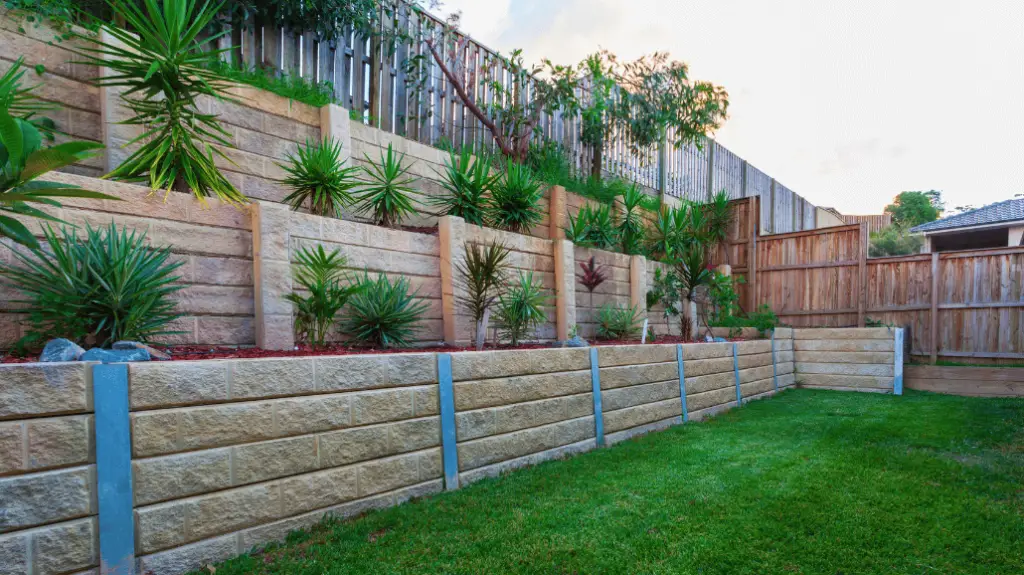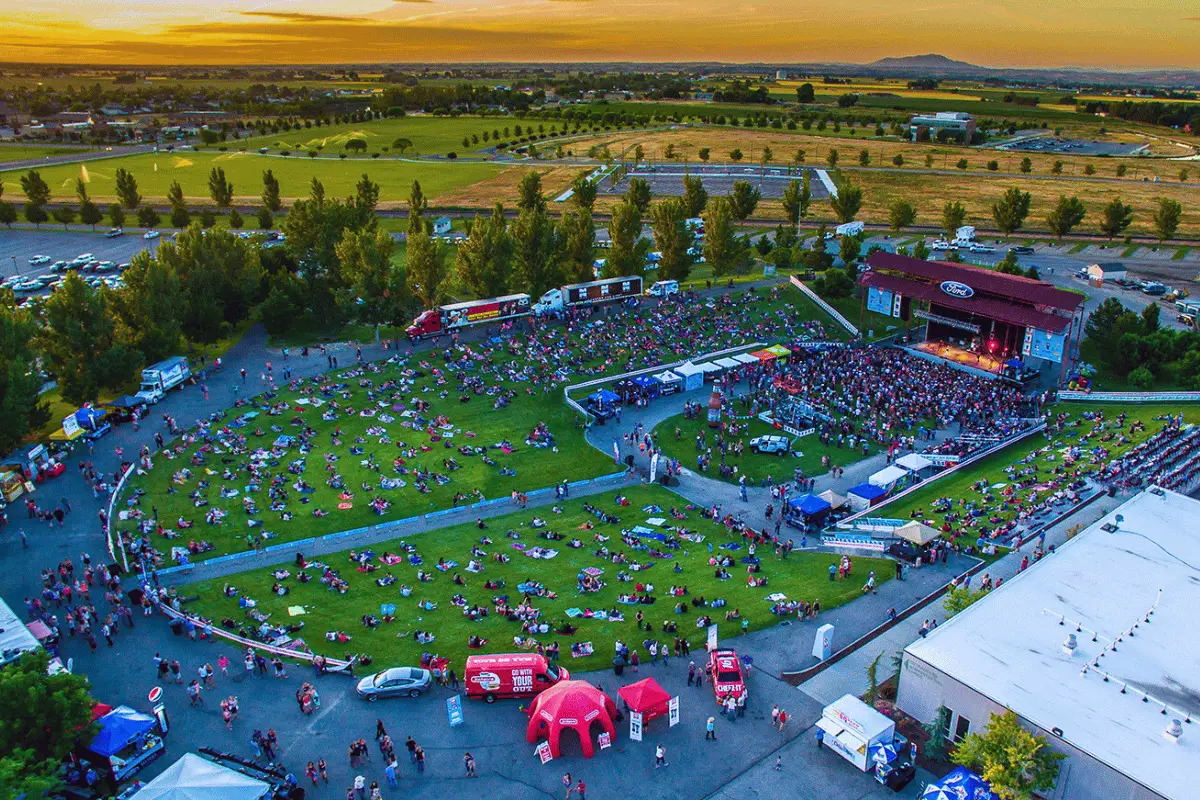In Treasure Valley, where rolling hills meet residential neighborhoods, erosion control is a key aspect of land management and landscaping. For homeowners in Boise and the surrounding areas, retaining walls preserve property integrity and enhance outdoor spaces. But these structures do more than add visual appeal—they serve as critical tools for managing soil erosion and preventing costly damage.
Learn more about retaining barriers and how they help maintain Boise’s beautiful landscapes.
Understanding Soil Erosion
Erosion is the natural process where soil is displaced by wind, water, or gravity. While this process shapes landscapes over time, it can be a serious concern for homeowners. In Boise and the Treasure Valley, erosion issues are worsened by the following factors:
- Seasonal Rains: Heavy rainfall during the spring can wash away topsoil.
- Snowmelt Runoff: Melting snow from the mountains increases water runoff and soil loss.
- Loose Soil: Our sandy and silty soils are particularly prone to erosion.
Left unmanaged, erosion can lead to uneven terrain, damage landscaping, and even threaten the stability of your home’s foundation. That’s where retaining wall systems can help.
What Are Retaining Walls?
Retaining walls are structures built to hold back soil and create level surfaces on sloped terrain. They can help retain soil and stabilize steep slopes. These walls can be made using a variety of materials, including:
- Concrete blocks
- Natural stone
- Wood
- Brick
- Gabion baskets
In addition to their practical purpose, retaining walls can be integrated into landscaping designs to enhance the visual appeal of your outdoor space.
How Retaining Walls Help Control Erosion
Retaining walls are one of the most effective (and cost-effective!) tools for preventing erosion. Here’s how they work:
- Soil Stabilization: By holding soil in place, retaining walls prevent it from being washed or blown away. This is especially important on steep slopes, where gravity exacerbates erosion risks.
- Water Management: Properly designed retaining walls incorporate drainage solutions, such as perforated pipes or weep holes, to direct water away from the soil. This prevents water buildup, which can lead to soil displacement and wall instability.
- Creating Usable Space: Retaining walls allow homeowners to transform sloped yards into level terraces. This not only increases usable outdoor space but also reduces erosion by eliminating steep inclines.
- Protecting Structures: For homes built near hillsides or on uneven terrain, retaining walls act as a buffer. They prevent soil erosion that could compromise the stability of foundations, driveways, or patios.
Additional Benefits of Retaining Walls
While erosion control is the primary function of retaining walls, they offer a range of additional benefits:
- Enhanced Curb Appeal: Retaining barriers add structure and texture to a landscape, boosting your home’s visual appeal.
- Increased Property Value: Homes with well-designed landscapes, including retaining walls, often see higher market values.
- Safety Enhancements: Retaining walls can prevent soil from encroaching on walkways or driveways, reducing the risk of slips and falls.
- Environmental Benefits: Properly constructed retaining walls minimize soil runoff, protecting local waterways from sedimentation.
Common Types of Retaining Walls
Retaining barriers can be constructed in various ways to prevent soil erosion. Here are some common techniques:
- Gravity Walls: These walls rely on their weight to resist the pressure of the soil behind them. Often constructed with stone or concrete, gravity walls are ideal for low to medium-height sloping sites.
- Cantilevered Retaining Walls: Cantilevered walls use a reinforced concrete base and leverage to hold back soil. These are suitable for taller walls and areas with significant erosion concerns.
- Segmental Retaining Walls (SRWs): Popular for residential landscaping, SRWs are made from interlocking blocks that do not require mortar. They provide flexibility and are excellent for curves or unique designs.
- Terraced Retaining Walls: For steeper slopes, terraced walls create multiple levels, reducing soil pressure and allowing for creative landscaping opportunities like garden beds.
Signs You May Need a Retaining Barrier
Not every property requires a retaining wall, but certain conditions make them highly beneficial. Consider installing a retaining barrier if:
- You notice frequent soil erosion or runoff on your property.
- Water pools in certain areas of your yard after rain.
- Sloped terrain limits your ability to utilize outdoor spaces.
- You’re concerned about protecting your home’s foundation or other structures.
Maintaining Retaining Walls for Long-Term Success
Retaining barriers require regular maintenance to ensure they remain effective over time. Here are some tips to ensure longevity:
- Inspect Regularly: Check for cracks, bulging, or leaning that may indicate structural issues.
- Clean Drainage Systems: Keep weep holes and drains clear of debris to maintain proper water flow.
- Address Minor Repairs: Repair small cracks or displacements promptly to prevent them from worsening.
- Monitor Plant Growth: While plants can enhance the appearance of a retaining wall, avoid deep-rooted plants that may compromise its stability.
Creating Custom Landscaping with Retaining Walls
Retaining walls can complement your home’s architecture and landscaping style. Here are some ideas to enhance their functionality and aesthetic:
- Incorporate Lighting: Add built-in lights to illuminate walkways or highlight landscaping features.
- Combine with Hardscaping: Use materials like pavers or stone to create pathways or patios adjacent to the retaining barrier.
- Add Greenery: Plant low-maintenance vegetation along terraced retaining walls to soften the structure’s appearance and improve its integration into the landscape.
Installing a retaining wall is a complex process that requires expertise in design, engineering, and local soil conditions. Partnering with a trusted local landscaper like Pleasant View Construction ensures that your retaining wall is built to last and tailored to the unique challenges of the Treasure Valley.
Key Takeaway: Invest in Stability & Style
Retaining walls are more than just functional structures—they’re an investment in the longevity, safety, and beauty of your property. For homeowners in Treasure Valley, they offer an effective solution to the challenges posed by erosion and sloped terrain.
If you’re considering a retaining wall or want to enhance your property with custom landscaping, contact Pleasant View Construction. Our team specializes in creating durable, beautiful solutions that protect your home and elevate your outdoor spaces. Let’s build something extraordinary together.



